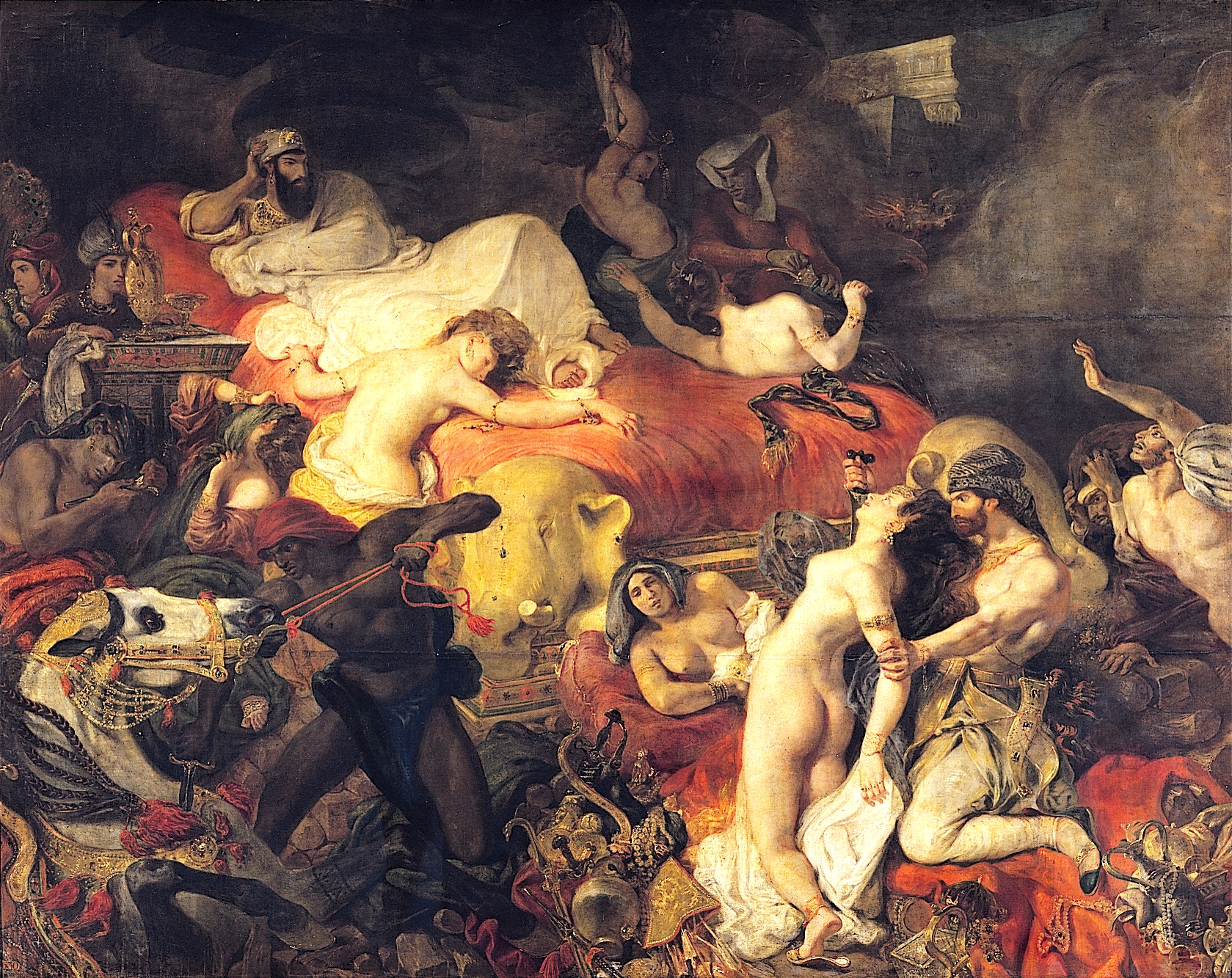“The Death of Sardanapal” is a seminal artwork by Eugene Delacroix, a master of the Romanticism movement, created in 1827. The oil on canvas measures a grand 392 by 496 cm and falls within the mythological painting genre. This piece of art can be found at the Louvre in Paris, France, as well as having a presence at the Philadelphia Museum of Art.
The artwork represents a tumultuous and vivid scene, encapsulating the last moments of the Assyrian king Sardanapal, who, in choosing death over defeat, orders the destruction of his possessions, including his horses, concubines, and treasures. The scene is charged with emotion, the dramatic use of color and vigorous brushwork conveying the turbulence of the moment. Central to the composition is Sardanapal himself, reclined nonchalantly upon a lavish bed, overseeing the chaos with a dispassionate gaze. Around him, the figures respond to their imminent doom with a spectrum of reactions, from desperate struggle to resigned acceptance.
The drama portrayed goes beyond mere physical destruction; it encapsulates the themes of passion, decay, and the ephemerality of power—all motifs prevalent in Romantic art. Delacroix’s choice of subject matter, his expressive use of color, and the dynamic composition all combine to make this artwork a quintessential example of Romanticism, imbued with a sense of grandeur and an overwhelming emotional intensity.





















